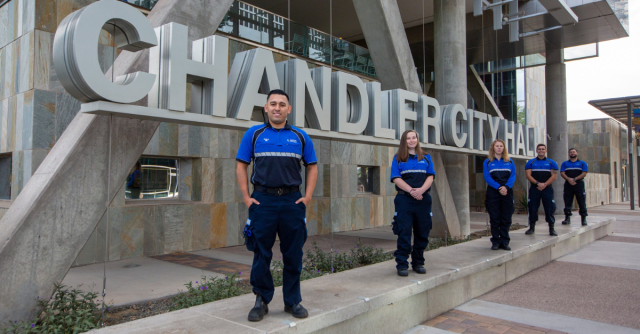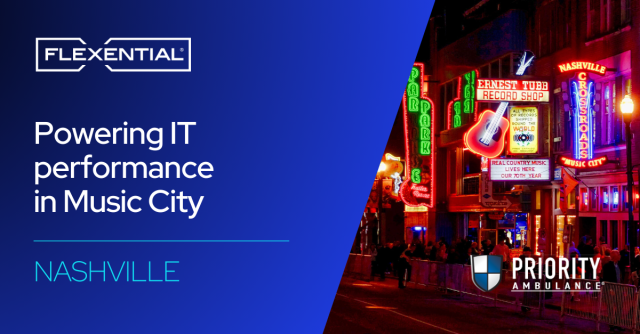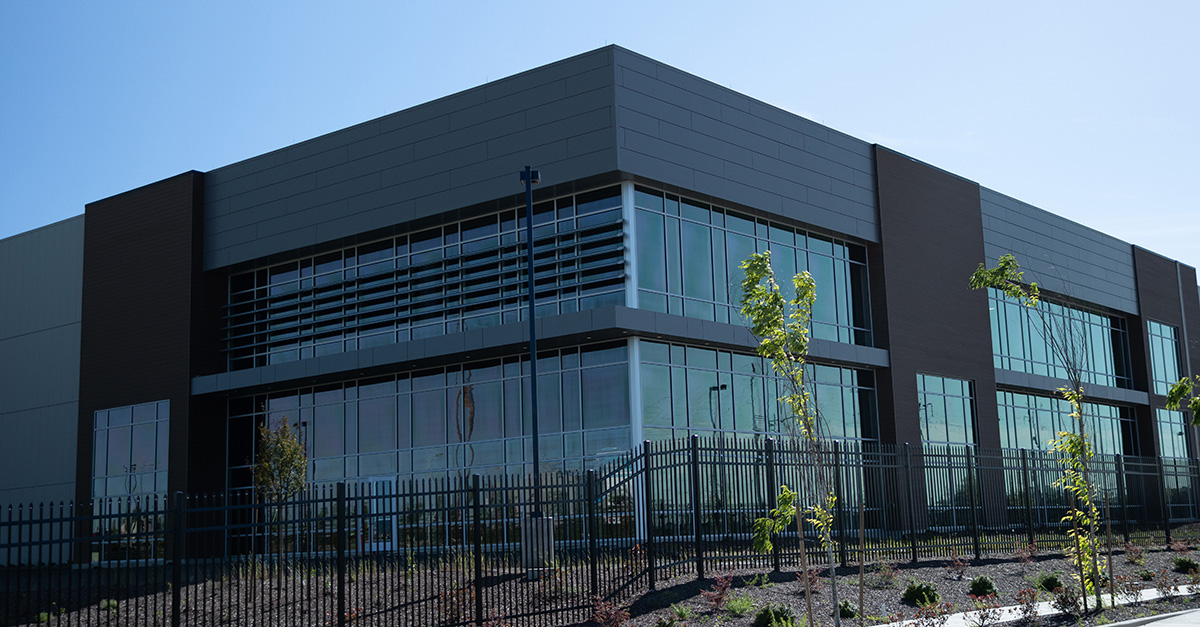The value of geographically diverse data centers
As organizations continue to demand rapid data delivery and unfaltering reliability to operate their businesses and deliver services to their customers, the data center—and its physical location—becomes increasingly essential. Deploying geographically diverse sites can enable a powerful IT strategy that supports availability, low-latency data delivery, and seamless scalability to optimize operations.

What is geographic diversity?
In the data center context, geographic diversity—frequently called geo-diversity—refers to the physical distance between data centers. While this distance can introduce a series of benefits, exactly how close the facilities should be to one another depends on the organization’s business objectives. This may include supporting a new corporate headquarters, implementing a disaster recovery (DR) plan, or supporting an expanding customer base. Geographic diversity is crucial in the data center industry to adapt to the rapidly evolving landscape and meet the surging demand for data storage.
Why is data center geo-diversity important?
In a digital business environment, success is largely reliant on the availability, speed, and flexibility of the business’s IT infrastructure. Geographically diverse data centers can support an organization’s IT strategy and business capabilities by minimizing latency, supporting resiliency, and enabling scalability. Geo-diverse data centers also play a crucial role in digital transformation by enhancing IT infrastructure availability, speed, and flexibility.
Minimize latency
The speed at which data is delivered to end users can be business-critical. Deploying a data center location near a corporate headquarters, a concentration of customers, or a traffic exchange point helps organizations reduce the time it takes for data to travel between the data center and its final destination.
By positioning workloads closer to end users, organizations limit latency. However, every organization has a unique latency tolerance. Some industries, such as healthcare, financial services, and e-commerce, have extremely low tolerances for data delivery delays. In healthcare, a delay can seriously threaten patient safety and well-being. Priority Ambulance, a 9-1-1 and interfacility ambulance services provider, utilizes strategically located data centers to ensure it can receive calls and dispatch potentially life-saving treatment quickly. The increasing demand for low-latency services drives the need for strategically located data centers.
In financial services, latency can translate to millions of lost dollars, especially in the ultra-fast-paced trading market. Latency also has a significant effect on e-commerce as any lag in delivery, upload or payment processing speed can frustrate customers, prompting them to abandon a purchase, which impacts the company’s profitability.
Work-from-anywhere scenarios also play a role in the latency landscape. With end users living and working in more dispersed areas—rather than concentrated in major cities—organizations rely more heavily on edge data centers to promote rapid access to the applications and data their users need. This is particularly true as employees utilize real-time video conferencing and cloud-based applications such as Microsoft Office, Salesforce, and NetSuite to remain productive. Edge locations are also key to supporting non-work activities such as real-time gaming and media streaming across a more distributed population.
Facilitate disaster recovery
Uptime is always a critical success factor in a digital environment. This makes a DR solution a best practice for every business. By utilizing physically distant data centers, organizations can ensure a local event, such as a hurricane or unavailable power source, cannot impact both locations. During a disaster, the organizations can fail over operations from the primary site to a geographically remote secondary site to protect data and continue operations. The distance between the facilities depends on the needs of the organization and should balance recovery and latency requirements. Additionally, infrastructure development is crucial in ensuring effective disaster recovery by providing the necessary power transmission and logistical support.
Support growth
Every organization needs a plan to scale its operations into new regions to support new customer bases and corporate offices. Geo-diverse data centers can help them reach these new markets to continually build and strengthen the business. This approach also supports data center growth in new regions, addressing the increasing demand for digital storage and the transformative impact of AI advancements.
Reduced risk
Reducing risk is a critical consideration for data center development. By strategically selecting data center locations, businesses can significantly minimize the risk of natural disasters, power outages, and other disruptions that can impact operations. For instance, data centers situated in regions prone to earthquakes or hurricanes may need to incorporate additional design and construction features to withstand these natural events. Similarly, data centers in areas with high crime rates or political instability may require enhanced security measures to protect against theft or vandalism. By carefully evaluating and choosing the right locations, businesses can ensure their data centers remain resilient and secure, safeguarding their critical data and operations.
Improved performance
Improving performance is another key consideration for data center development. The right location can provide access to high-speed networks, reliable power, and skilled labor, ensuring that data centers operate at optimal levels. For example, data centers located in areas with high-speed fiber optic connections can offer faster data transfer rates and lower latency, enhancing overall performance. Additionally, data centers in regions with reliable power grids can minimize the risk of power outages and downtime, ensuring continuous operation. Access to a skilled workforce also plays a crucial role, as it ensures that the data center can be efficiently managed and maintained. By choosing locations that offer these advantages, businesses can maximize the performance and reliability of their data centers.
How to choose a data center partner
Organizations should consider several factors when selecting a data center provider to support their latency, DR, and growth requirements to ensure a long-term partnership.
Additionally, it is crucial to evaluate the data center capacity, as projected growth rates and regional factors like tax incentives and investments from tech giants can significantly impact future scalability and affordability.
Where are their data center locations?
Organizations should look for a provider with a portfolio of geographically diverse data centers. This ensures access to additional locations to meet future demands.
Is there data center capacity for the future?
Space and power supply are increasingly limited in many core data center markets. Colocation providers with presences in high-growth secondary markets can deliver the resources needed to support future growth and latency expectations at the digital edge. Providers with land banks and secured power resources can also build new facilities to support future needs. Data center expansion is crucial in meeting future capacity demands, addressing regional growth trends, and managing the challenges of increased electricity usage and geographic constraints.
Is connectivity available between the facilities?
Secure, high-speed connections between geo-diverse facilities are non-negotiable. Providers that connect their facilities via a private network can improve communications and data security between the sites. Providers should also offer diverse connectivity options to enable organizations to connect with their preferred providers. Additionally, a reliable power grid is crucial in ensuring seamless connectivity between data centers.
Can they offer support?
The “right” provider is more than available space, power, and cooling. Organizations should look for a data center partner with a strong customer focus and the expertise to help identify, define, and execute strategies across geo-diverse sites. This can include building a DR strategy or recommending additional services or locations to strengthen the IT solution and better serve internal and external customers. Advanced data center infrastructure is crucial in providing effective support, especially with the growing demand for efficient power management and innovative technologies.
Location considerations for data centers
When it comes to data center development, location is a critical consideration. The right location can provide access to reliable power, high-speed networks, and skilled labor while minimizing the risk of natural disasters, power outages, and other disruptions. By carefully evaluating potential locations, businesses can ensure their data centers are positioned to deliver optimal performance and resilience. Factors such as proximity to high-speed fiber optic networks, stable power grids, and a skilled workforce can significantly impact the efficiency and reliability of data center operations. Additionally, considering the risk of natural disasters and other disruptions can help businesses choose locations that offer greater security and stability for their data centers.
Economics and regulations
Economic and regulatory factors are also important considerations for data center development. Data centers located in areas with low energy costs and favorable tax incentives can help businesses reduce their operating costs, making them more economically viable. Additionally, regions with supportive regulatory environments can facilitate smoother operations and compliance. However, data centers in areas with strict data privacy regulations may require additional security measures to ensure compliance, which can impact overall costs and operational complexity. By carefully assessing the economic and regulatory landscape, businesses can make informed decisions that balance cost-efficiency with compliance and operational effectiveness.
Key takeaway
Data center providers must deliver more than a reliable IT environment. Providers with a national network of interconnected, geo-diverse facilities can help organizations build dynamic IT strategies that enable rapid data delivery and an always-available environment to promote business success and a competitive edge.
Learn how Priority Ambulance leveraged the Flexential portfolio of geographically diverse data centers to ensure the speed and availability of its systems during a high-growth period.
Geo-diverse data centers can help minimize latency and support disaster recovery and growth.







